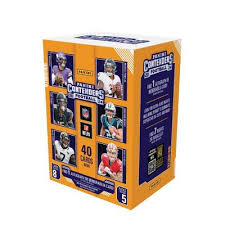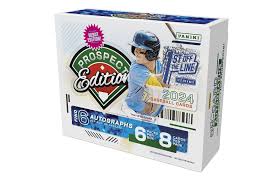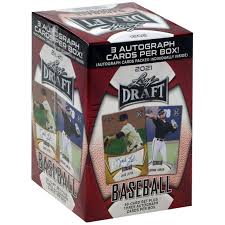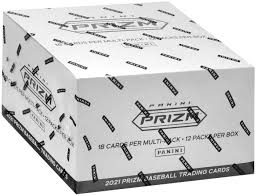

For years, there have been two major players in the modern card-grading world: PSA and BGS. But a new upstart called HGA Grading is looking to break in and put its name among the grading world’s elite.
Only time will tell whether they’re able to do so. But the company is doing things differently, and that makes them worth paying attention to. Keep reading to get an overview of HGA Grading and what makes them unique.
HGA Grading is a sports card grading service in the same vein as PSA and BGS. Like those services, customers can submit their sports cards to HGA in order to have their condition assessed. HGA will return the card in a sealed plastic slab with a grade on the label displaying their objective rating of the card’s condition.
PSA and BGS have dominated the modern card grading market for years now. They’ve become the standard by which upstart grading services must be compared. To gain a foothold in the market, a new grading service needs to do something that these titans can’t.
HGA Grading might have what it takes. There are several things that set it apart from PSA and BGS.
It takes an average of 8.5 weeks to get a card back from PSA. But some people report waiting six months or even longer to get a card that they’ve submitted for grading back from PSA or BGS. This is one of the main pain points of using these services.
HGA will get your cards graded and back to you much faster than that. They have options with scaling pricing for a turnaround time of 10 days ($55 per card), 30 days ($35 per card), or 60 days ($20 per card).
Until now, card grading services have always had to use humans for the actual grading process. This is one of the main reasons why services like PSA and BGS take so long to return the cards that they receive.
There are pros and cons to this approach. On the positive side, humans are able to apply a level of judgment to the grading process that machines can’t match. But they also make the grading process inherently subjective.
For example, two different people might give the same card different grades because of the different ways in which each views the card.
HGA Grading has opted to use a digital grading system instead of the traditional model. They’ve done this by creating a proprietary software that they say will scan, analyze, and grade cards with pure objectivity.
The company says that their ultra-high resolution scanner sees better than a magnifying glass and is capable of spotting blemishes the size of a speck of dust.
But don’t worry, the company has error-proofed this process. It uses AI to grade the card initially, but then two different humans look at the card to verify that the AI’s grade is correct.

When you get a card back from PSA or BGS, it will have been put into a slab to protect it and display the rating that it’s been assigned. HGA also does this, but their slabs are a bit different.
The company’s slabs are color-coordinated with the team colors of the player on them. For example, a Celtics card would come back in a slab with a stylized green design.
Along with these, HGA’s slabs include sub-grades that replicate what you’d get from BGS or PSA. These tell you how they scored each category that went into the overall grade of the card.
HGA uses the same grading scale that’s been made famous by PSA and BGS. When you send a card to them, it will receive a 1-10 score for its:
Each of these scores is then added together and averaged out to create an overall grade for the card that you sent in. This system will be very familiar to anyone who’s sent a card in for grading at PSA or BGS.
Unfortunately, limited information is currently available regarding the stringency of their scoring requirements. So while we know that BGS tends to be more demanding about centering, we don’t yet have a good idea of where HGA Grading lands on the issue.
You might expect HGA to be less expensive than BGA and PSA because of its digital grading method. But choosing them probably won’t save you much money.
Currently, the company’s prices range from $20 to $55 per card. This falls in line with what BGS charges, which can range between $10 and $40 for normal cards. (BGS also offers premium grading services with options running as high as $125 per card).
PSA does things a bit differently. They charge based on the value of the card, with prices ranging anywhere from $10 to $5,000 per card. So you may or may not save money on grading by choosing HGA over PSA. The answer will depend on how much your cards are worth.
Though HGA Grading isn’t cheaper than PSA or BGS, it is getting its customers’ cards back to them much faster than its competitors. So you might think of them as offering an extra benefit at the same pricepoint as their competitors’ normal service.
Submitting your cards to HGA is much the same as submitting them to PSA or BGS. To do so, just follow these steps:
HGA Grading is still very new to the market. So it’s virtually impossible to determine how much people are willing to pay for cards that have been graded by them. But we can make an educated guess.
People may be willing to pay a bit more for HGA-graded cards than they would for non-graded ones. But they’re certainly not going to pay as much for an HGA-graded card that has the same rating as a card that’s been graded by either BGS or PSA.
That’s because BGS and PSA are industry standards, while HGA Grading just isn’t (yet, at least). So if you want to maximize the value of your card, then submitting it to either PSA or BGS is still the way to go.
But keep an eye on the value of HGA-graded cards as time goes on. If the company develops a name for itself as a trusted grader of sports cards, then chances are people will be willing to spend more and more on HGA-graded cards as time goes on and their reputation strengthens.
Ultimately, the success or failure of a grading service will be determined by how willing the collecting community is to embrace them. Judging by this forum post, early results are mixed for HGA Grading.
Some are excited about the possibilities presented by digital grading. They talk about the potential of faster turnaround and pure objectivity in the grading process. Others wonder why prices aren’t cheaper given the company’s automated grading system.
Generally, the community seems to have adopted a wait-and-see approach. They’re interested in the technology and potential of HGA Grading, but aren’t yet convinced that cards graded by them are worth all that much.
Some also expect PSA and BGS to begin their own automated grading process in the near future. If that happens, they wonder why anyone would still choose HGA Grading over one of its more established competitors.
This is a decision that you’ll need to make for yourself. The company has brought innovation to the card-grading industry, which could prompt BGS and PSA to change their approaches to grading in the future.
But it’s unclear whether paying for a card to be graded by HGA would provide you with any value. How much weight will be given to a grade from HGA? Will collectors be willing to pay more for it? How much more?
These are questions that can only answered in time. Until then, HGA Grading is a company that’s worth watching.
I deep-dove on Fanatics Collect so you don't have to (but should you?)
Panini is launching a WNBA Product at $30,000!?
Topps Chrome 2024-25 Basketball: Honest Review and Notes
Did you know this SECRET about PSA slabs? #sportscard #tcg
5 EASY tips to make more money on eBay sports cards.
I opened a sports card mystery box and found something AWESOME inside
The SAD story of Collectable. What went wrong? (The Downfall Fractional Sports Card Investing)
what was Panini doing? 🙄





2022 Topps Heritage Baseball Blaster Box Configuration: 7 Packs per Box – 9 Cards per Box. Plus 1 extra pack.











Keep up on breaking Sports Card News, our latest articles, product specials and exclusive content with expert analysis of hobby trends.

© Copyright 2025 - All rights reserved Cardlines.com / Media Techs LLC - Sports Card News, Reviews, Releases and BREAKS - #thehobby.
Important: When you click on links to various merchants on this site and make a purchase, this can result in this site earning a commission. Affiliate programs and affiliations include, but are not limited to, the eBay Partner Network.
I Tested eBay Auction Promotions So You Don’t Have To!
Cardlines 22 hours ago